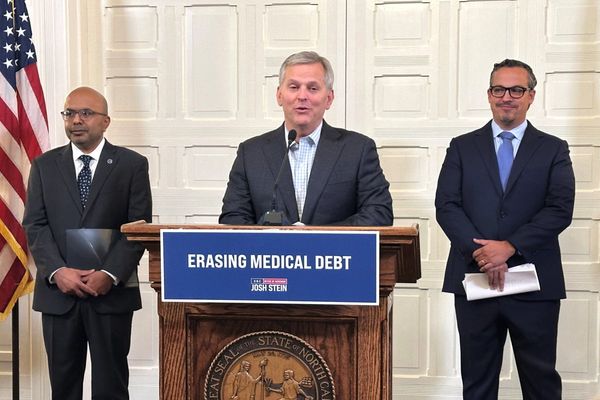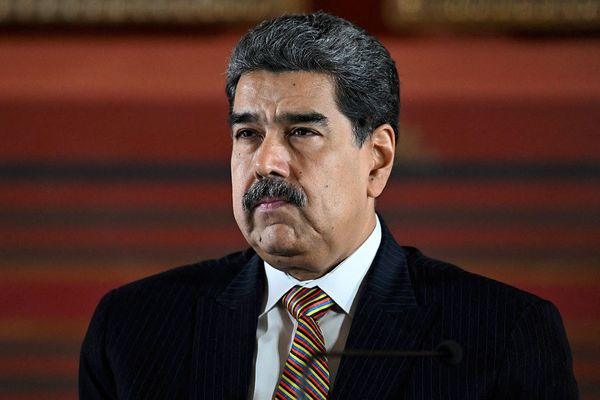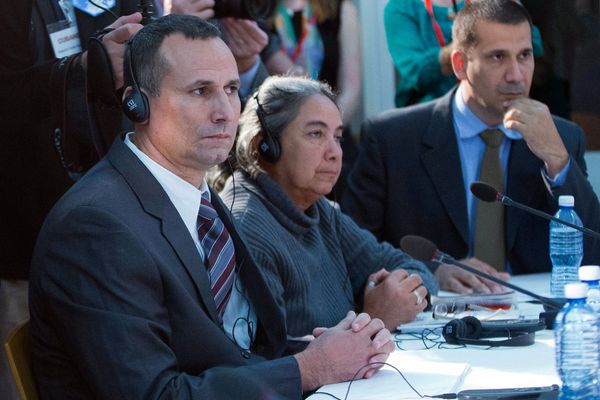The bond market these days isn't the sleepy, boring place it's known for. With yields surging and calls for at least one more Federal Reserve rate hike swirling as inflation remains stubbornly high, bonds are the talk of Wall Street.
All the focus on bond yields gone wild has investors wondering how high rates will go and whether it's a good time to buy bonds, many which now pay interest of 5% or more.
So, with all eyes on fixed-income, Investor's Business Daily caught up with Alex Obaza, manager of T. Rowe Price Ultra Short-Term Bond, to get an insider's view of the turmoil in the bond market.
Fighting The Fed's Fight
The Fed's fight against inflation forced it to raise its key borrowing rate to a range of 5.25% to 5.5% — its highest level since 2001. That has made the bond market "a more interesting place," Obaza said.
Obaza's fund, which invests in investment-grade bonds that mature in 1.5 years, on average, is currently in the investment sweet spot. That's because the short-term bonds the fund invests in, which include corporates, asset-backed securities and U.S. government bonds, now yield more than longer-duration bonds. That's known as an inverted yield curve. A 1-year Treasury, for example, currently yields 5.5%, roughly three-quarters of a percentage point more than the 10-year Treasury note.
But in managing T. Rowe Price Ultra Short-Term Bond, Obaza looks to provide investors with incremental yield beyond what they can get in a money market account. To do that, he now has roughly two-thirds of the fund's $2.2 billion in assets invested in ultra-short corporate bonds that sport yields of 6% or more. As a result, the fund's yield-to-maturity is 6.15%. That means, according to Obaza, if you bought the fund today and the portfolio theoretically held all its bonds until maturity, that's the yield you would earn today.
Finding More Yield
That strategy of adding extra yield, without taking on much additional credit or interest rate risk due to the holdings' short maturities, has served the fund and investors well. T. Rowe Price Ultra Short-Term Bond is a 2023 IBD Best Mutual Funds winner, as it has topped its benchmark in the past 1, 3, 5 and 10-year periods. So far in 2023, the fund, which holds more than 300 different bonds, has gained 4.4%, outpacing nearly 80% of similar funds.
Obaza says the Fed is likely near the end of its rate-hike cycle. But it's unlikely to cut rates anytime soon. That means market conditions still favor ultra short-term bond funds. "The outlook is really compelling," he said.
Bond Market's Drivers
Below, Obaza discusses what's driving the bond market and how investors can take advantage of today's plump yields.
IBD: Earlier this year Wall Street was saying locking in a 4% yield was a good deal. Are bonds even a better deal now with a starting yield closer to 5%?
Alex Obaza: The mistake a lot of people have made in this cycle is looking at an absolute yield. "Oh, 3% is attractive. We haven't seen a 3% 10-year Treasury in a long time." Same for a 4% yield. The issue is yields don't start to get attractive until they get above inflation. That's when yields get attractive because that's when they're doing their job to slow economic activity. (Currently, yields on the Fed funds rate at a range of 5.25% to 5.5% and the 10-year Treasury near 4.8% are both higher than the latest Consumer Price Index (CPI) of 3.7% as well as the Fed's preferred inflation gauge, the Personal Consumption Expenditures Price Index (PCE) of 3.9%).
IBD: So, are today's higher yields worth considering?
Obaza: They're offering both pretty good income and some compensation for risk (in the event yields decline due to) a recession. So, that's kind of the setup. But you have to break the bond market up a little bit. The whole bond market goes from one-day maturities to 30-year bonds. It's kind of hard to look at that whole market as if there's just one day trade. But I would say the outlook right now for front-end bonds, or those with durations of three years and shorter, is really compelling.
Watching The Yield Curve Inversion
IBD: Why is staying on the short on the end of the yield curve still the way to go?
Obaza: If you look at an ultra short-term bond fund like ours, it's comfortably yielding about 6%. And that's well above where short T-bills are. And returns on these ultra-short strategies have been positive this year, even with yields still going up and credit markets being pretty volatile.
IBD: Long-term Treasuries were among the biggest losers in September during the bond sell-off. Why did they get hit worse than ultra short-term bonds?
Obaza: If you look at an ultra short-term bond fund like the one I run, my duration is about one to one-and-a-half years. That means for every 1% that interest rates go up, the fund will lose half a percent of its return. (Bond prices move in the opposite direction of yields). Compare that to a longer-duration fund. If you look at an U.S. aggregate bond index, which tracks the investment grade corporate bond market, the duration of that is seven or eight years. So, for every 1% yield rise, you'd lose seven or eight percentage points. So, we're talking about long-term bond funds that have upwards of 15 times the amount of interest rate exposure versus an ultra short-term bond fund.
Perks Of Short Duration
IBD: So, shorter duration bonds have less to lose when rates rise?
Obaza: When interest rates go up, the bonds we own are still maturing pretty soon. So, the income we get from that bond isn't going to be hurt by inflation that much, at least not as much as a bond you're holding for 10 years. If you hold a bond for 10 years and, say, inflation is going up 3% to 4% every year, that fixed coupon you're getting in a longer bond is really going to be worn away over time. So that's why those long-term bonds go down in price more, because you need more yield to compensate for that reduced purchasing power.
IBD: Are ultra short-term bonds still the place to be in a "higher for longer" rate world?
Obaza: Yes, I think higher for longer is still conducive to the front end, because I would argue that we're a lot closer to the end of the hiking cycle than the beginning. Whether or not the Fed goes one more time or not, I think it's safe to say that would be about it for hikes. But there's a big difference between ending a hiking cycle and then considering a cutting cycle. I agree that there are headwinds gathering for the economy. And that might make one think, "OK, we're going into a recession, and I think yields will come down, and I'll get a larger return from longer-duration bonds (with more rate sensitivity)." But I don't think it's that simple. It might take noticeably longer this time to shift from the hiking cycle to a cutting cycle. In that environment, you continue to have an inverted yield curve. And the front end is really your friend to generate the most income.
Going Corporate
IBD: Why is a big chunk of your fund invested in corporate bonds and not government bonds?
Obaza: Our ultra short-term bond strategy is an alternative for money fund investors. It's for folks that don't have near-term cash needs but want to have a cash allocation to their portfolio. So, my goal is to offer an incremental yield versus money market funds. My philosophy on the best way to generate that incremental yield is to run a multi-sector fixed-income portfolio comprised of our analysts' best ideas. Our fund, as a result, has a yield to maturity of nearly 6.2%. So, that's where we get that incremental income from. In the current environment, we get an additional half a percentage point to a full point in additional yield.
IBD: Give me a few examples of short-term corporate bonds you own that yield 6% plus?
Obaza: We have a couple larger holdings in the cable TV and (telecommunications) space: Rogers Communications from Canada and Charter Communications in the U.S. They are both roughly two-year bonds with predictable cash flows. They have leverage, but our analysts think it's an appropriate amount of leverage. They're rated lower than a Treasury because they have some credit risk to them. We do our homework on the fundamentals and the balance sheets, and we think we get pretty attractive yields on those kinds of one- to two-year triple B-rated bonds. Rogers yields 6.3%. And Charter is about 6.2%.
How High Will The Fed Go?
IBD: How high do you think the Fed will go with rates? Some Wall Streeter are calling for 6% (up from 5.5% now)?
Obaza: I don't think 5.75% would be crazy. Fed policy is definitely restrictive now. But when you look at (the current range of 5.25% to 5.5%) versus history, it's not very restrictive (compared to) how restrictive we've had to get historically before economic cycles rolled over.
IBD: What would cause the Fed to push rates higher than the consensus of one more quarter-point hike?
Obaza: Inflation is still the risk. If we saw a real acceleration of inflation, that's what you would have to have before you consider a 6% Fed funds rate. That's not my base case, but it is a potential outcome.
Bond Bulls Vs. Bears
IBD: Are you bullish or bearish on bonds now?
Obaza: I am positioning the portfolio for higher borrowing costs to persist and to benefit from a continued inverted yield curve environment. And that is a real benefit for our ultra short-term strategy because I can get more yield on a one-year bond than a three-year bond. And so, I'm taking a lot less interest rate risk, a lot less credit risk, and I can get more yield.
IBD: It sounds like ultra short-term bond funds are a good fit for risk-averse investors.
Obaza: Yeah, but it always depends on what you're comparing it to. If you compare our fund to regulated money market funds, we inherently have more risk because our NAV (net asset value) can move, (which means investor capital is at risk. It's very unusual, however, for a money market fund's NAV to "break the buck," a term which describes when a money fund's NAV falls below $1). But if you're comparing ultra short-term bond funds to other fixed-income funds or stock funds, in the current environment it's reasonable to expect that we'll have less volatility.
Rates Set For A Fall?
IBD: What could make rates fall?
Obaza: Economic deterioration. And that could be economic data rolling over or it could inflation rolling over faster than expected.
IBD: With bond yields plump, does a balanced portfolio of 60% stocks and 40% bonds make sense again?
Obaza: You've heard a lot of people use the "bonds are back" slogan. I would say the transition from zero yield to higher yields can be temporarily painful. But once you get there, and I'd say that the front end of the curve is getting there, you have your bond portfolio that does two things. It generates income and it diversifies your risk. If you've got a major sell-off in equities, it's more reasonable to expect bonds to appreciate. And, as I said earlier, now that we have positive real yields, that can serve a powerful role in the portfolio.
IBD: What ultra short-term bonds have you been buying recently?
Obaza: We've been increasing exposure to asset-backed securities, such as auto-financing debt. These are triple-A rated securities in the 6% yield area. (Spain headquartered) Banco Santander has a U.S. business that issues these types of bonds. General Motors and Ford Motor, as well. These are bonds that we buy; you know, you go in and buy a car from GM and they offer you financing.
The Dangers Of Treasuries
IBD: So, what would get you to buy the ultra-short Treasuries?
Obaza: Personally, I'm not a believer of soft landings. I think the economic cycle will roll over at some point. I just think it might take longer this time around because it's taking longer for higher rates to impact the economy.
IBD: So, you're basically saying you would be more apt to buy Treasuries when the economy rolls over and people are looking for safety.
Obaza: Yes, but ideally, we'll make that portfolio transition (and start buying Treasuries) before the economy rolls over.
IBD: So, what's your message to bond investors?
Obaza: First, the returns on the front end of the yield curve are really compelling right now. Secondly, as a bond investor, you should be able to take more comfort today, given that we have positive yields, versus where we were at the beginning of this year and this time last year. That should be a positive tailwind for bond investors going forward.
8 Hot Big Stocks Aren't In The S&P 500 — But You'll Wish They Were







